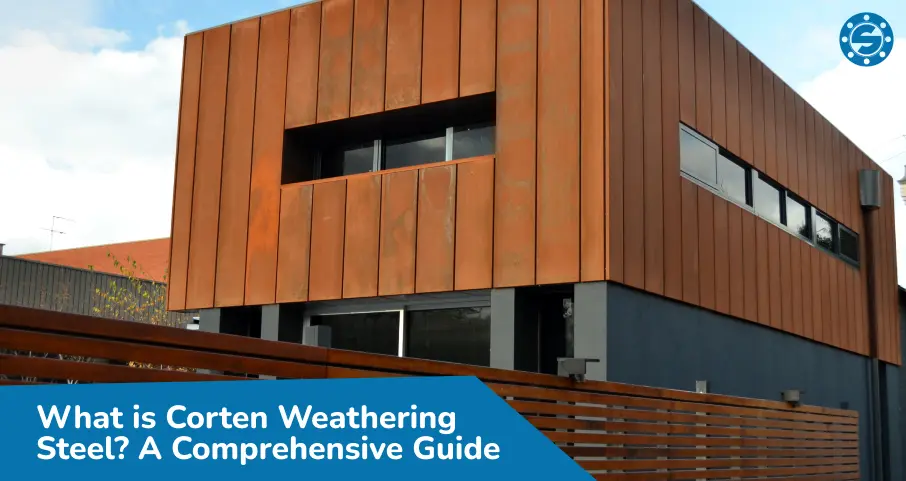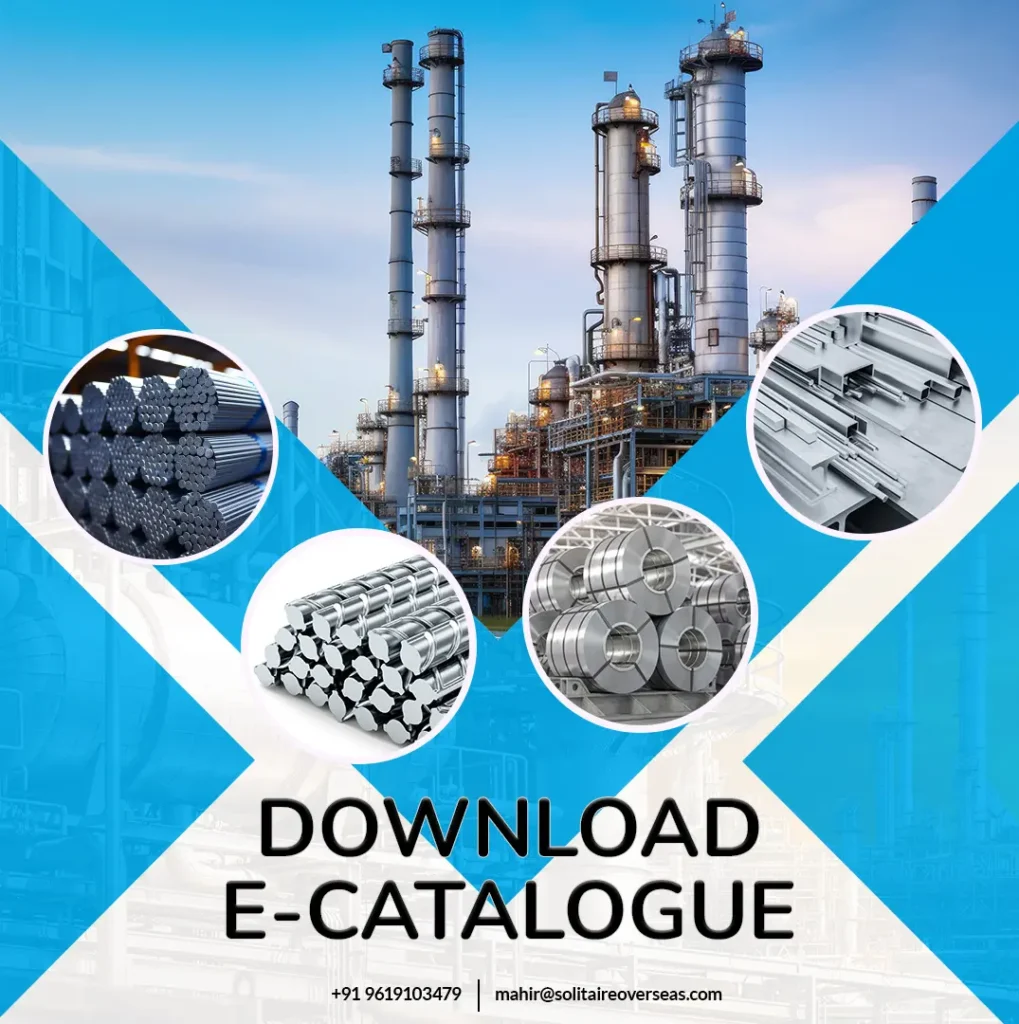What is Corten Steel?

Corten steel, also known as ‘weathering steel,’ is a group of steel alloys initially developed to eliminate the need for painting or protective coatings on steel surfaces. What truly sets Corten steel apart is its ability to develop a protective layer that resembles rust when exposed to atmospheric elements. This unique characteristic makes it highly resistant to corrosion.
This innovative material was first developed in the 1930s, primarily for the railroad industry, and was patented by U.S. Steel (USS). The name “COR-TEN” reflects the material’s two primary properties: ‘Cor’ stands for Corrosion Resistance, and ‘Ten’ indicates Tensile Strength.
What is Corten Steel Made of?
Is Corten Steel Expensive?
Although Corten steel might come with a higher upfront cost compared to mild steel, it proves to be an economical choice in the long run. Given its resilience and low maintenance requirements, your investment in Corten steel recoups itself over time.
Furthermore, when you consider the expenses associated with protecting other sheet metals through processes like painting or galvanizing, the price difference starts to level out, reaffirming the cost-effectiveness of Corten steel.
Where is Corten Steel Used?
Corten steel‘s unique properties make it a popular choice across various industries, including architecture, construction, and landscaping. It’s often seen in large structures like bridges and iconic sculptures such as the Angel of the North. However, Corten steel isn’t limited to grand structures alone. Recently, it has become increasingly popular for creating outdoor garden products like steel planters, artwork, edging, water features, and street furniture, adding a natural and rustic aesthetic to any outdoor space.
Benefits of Corten Steel / Weathering Steels
Wide Range of Uses: Weather-resistant steel, or Corten steel, doesn’t rust in the air, eliminating the need for paint in many structural and architectural applications. It is used in bridges, open-frame buildings, transmission towers, and sculptures. Its ability to handle high temperatures makes it ideal for flues, chimneys, and ducting.
Practical Advantages: Weathering steel offers several benefits for structures exposed to the weather:
- Very Low Maintenance: Structures require minimal checks and cleaning, making weathering steel ideal for bridges and other hard-to-access or dangerous locations where minimizing future disruptions is crucial.
- Initial Cost Benefits: Eliminating the need for protective paint systems can save money. For example, the cost of weathering steel can be about 5% less than painted steel options in bridges using a HA Type 2 paint system.
- Whole-Life Cost Benefits: Reduced maintenance requirements lower both direct maintenance costs and indirect costs such as traffic delays or rail possessions.
- Speed of Construction: Without the need for shop painting and on-site painting, overall construction time is reduced.
- Appealing Look: Mature weathering steel has an attractive appearance that harmonizes well with its surroundings, improving as it ages.
- Environmental Advantages: Future maintenance avoids issues with paint’s volatile organic compounds (VOCs) and the disposal of blast-cleaning debris.
- Safety Benefits: Eliminates initial painting-related health and safety issues and reduces risks associated with maintenance.
- Benefits at High Temperatures: Weathering steels resist rusting at temperatures above 400 degrees Celsius. Even in the absence of water, a protective patina forms. Performance improvement depends on the heating cycle and environment, typically showing a 50-degree Celsius increase over the same loss in carbon manganese steels.
Corten A Weathering Steel
Corten A is a weather-resistant steel composed of copper, chromium, and nickel, with added phosphorus. This combination makes it ideal for gas flue applications and aesthetically pleasing facias.
- Material Composition: Copper, chromium, and nickel, with phosphorus.
- Applications: Ideal for gas flue systems and facias due to its weather resistance and aesthetic appeal.
- Load Considerations: Not recommended for heavy-load applications. For such purposes, consider using Corten B or S355J2W.
Chemical Composition of Corten A
| C | 0.15 |
| Si | 0.25/0.75 |
| Mn | 0.20/0.50 |
| P | 0.07/0.15 |
| S | 0.030 |
| Al | 0.015/0.06 |
| Cu | 0.25/0.55 |
| Cr | 0.50/1.25 |
| Ni | 0.65 |
Mechanical Properties of Corten A
| Grade | Thickness (mm) Strip Products |
Plate Products | Yield Strength Rel N/mm² Minimum |
Tensile Strength Rm N/mm² Minimum |
Elongation A50 % Minimum |
|---|---|---|---|---|---|
| Corten A | 2-12 | 6-12 | 345 | 485 | 20 |
Corten B Weathering Steel
Corten B is a durable weathering steel designed for large, heavy structures.
- Self-Protecting Layer: Corten B develops a protective rust layer when exposed to the elements, which prevents further corrosion and eliminates the need for painting.
- Low Maintenance: The natural rust finish typically requires minimal upkeep, offering a cost-effective alternative to other structural steels.
- Considerations for Wet Environments: In consistently wet conditions or where parts of the building are submerged or in contact with the ground, regular painting and maintenance are necessary, as the protective layer may not form effectively.
Corten B Chemical Composition
| % | |
|---|---|
| C | 0.19 |
| Si | 0.30/0.65 |
| Mn | 0.80/1.25 |
| P | 0.035 |
| S | 0.030 |
| Al | 0.020/0.06 |
| V | 0.02/0.10 |
| Cu | 0.25/0.40 |
| Cr | 0.40/0.65 |
| Ni | 0.40 |
Corten B Mechanical Properties
| Grade | Thickness (mm) Strip Products |
Plate Products | Yield Strength Rel N/mm² Minimum |
Tensile Strength Rm N/mm² Minimum |
Elongation A50 % Minimum |
|---|---|---|---|---|---|
| Corten A | 2-12 | 6-12 | 345 | 485 | 20 |


